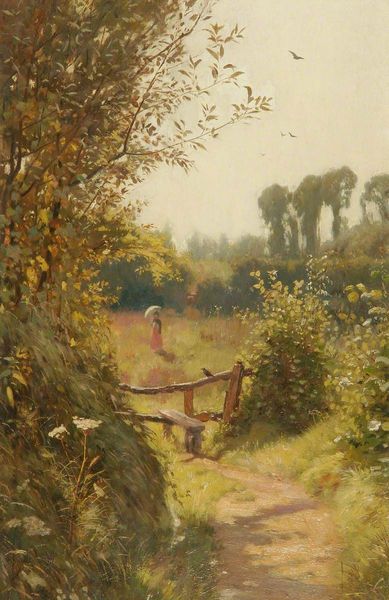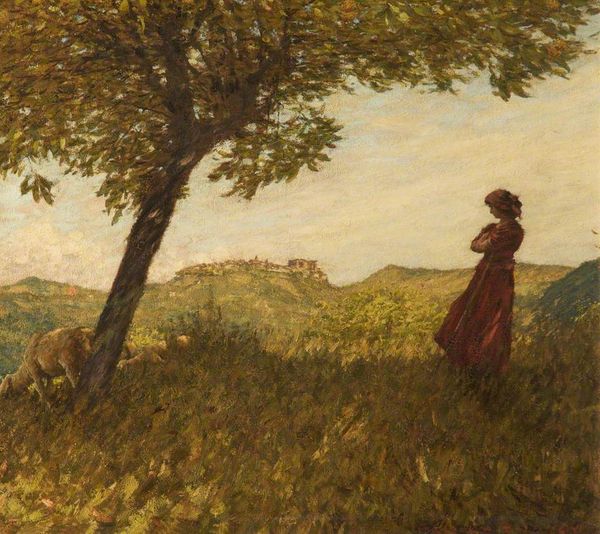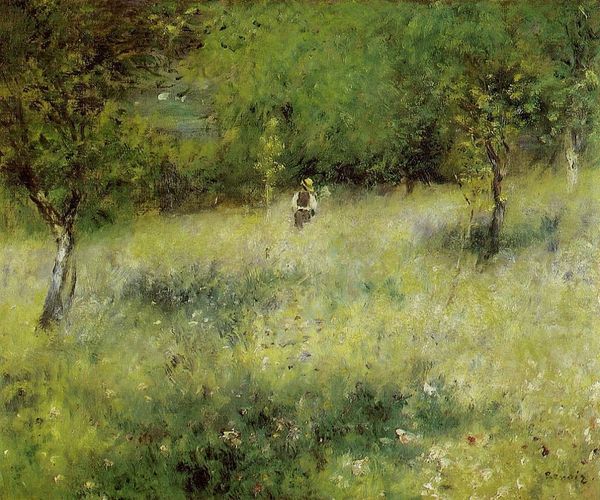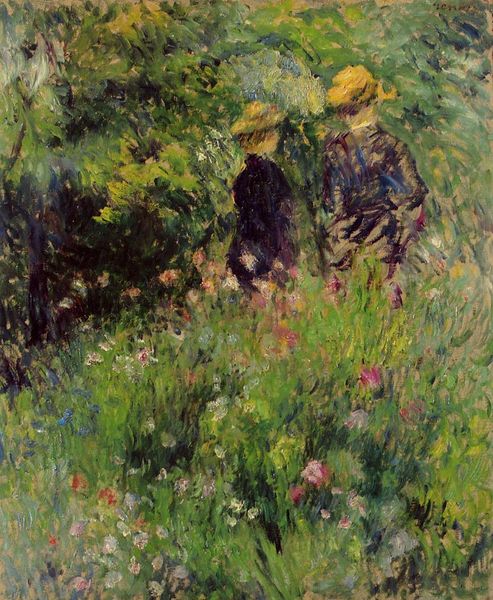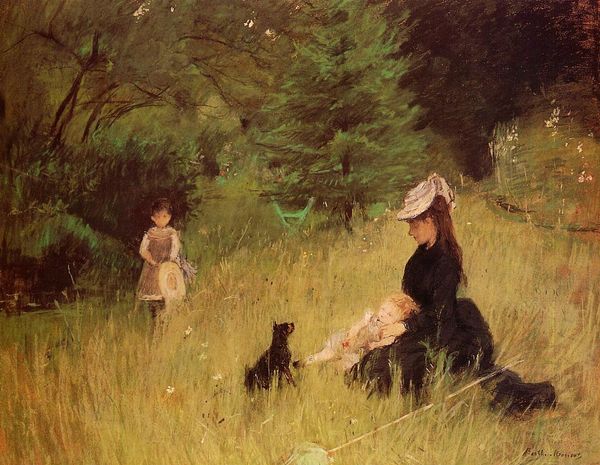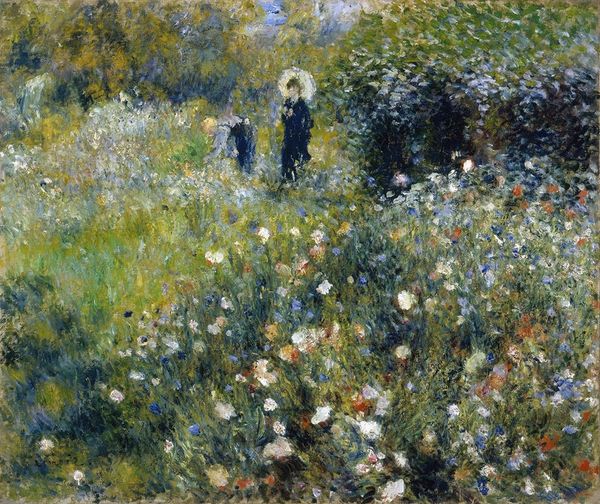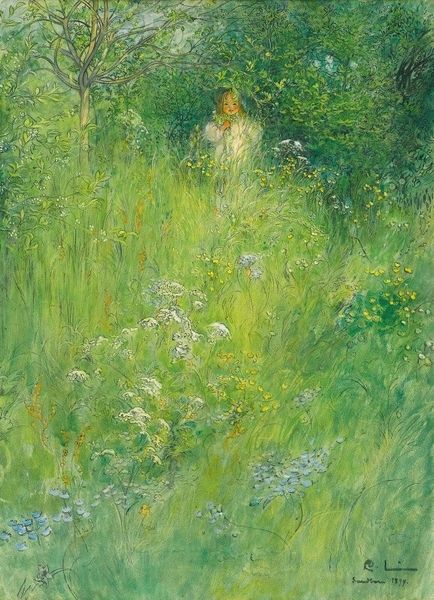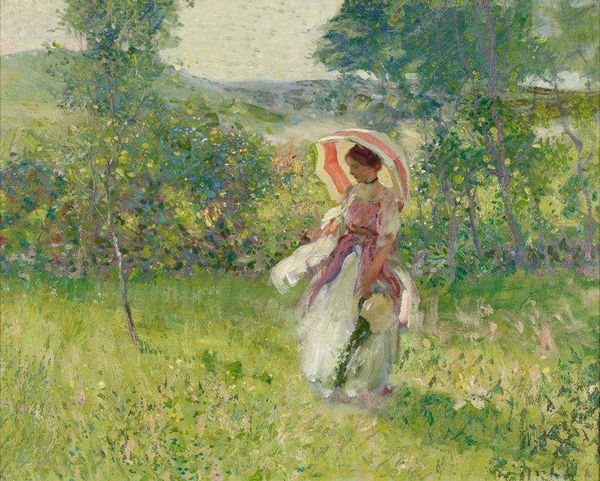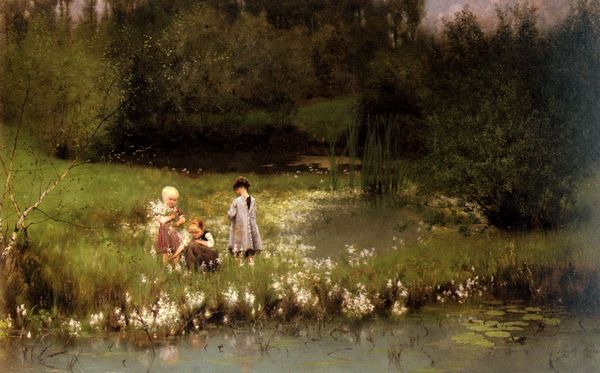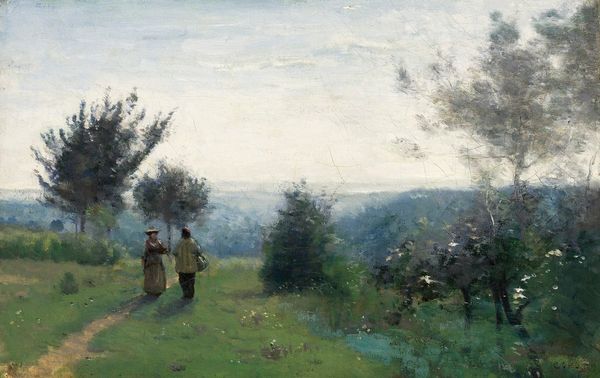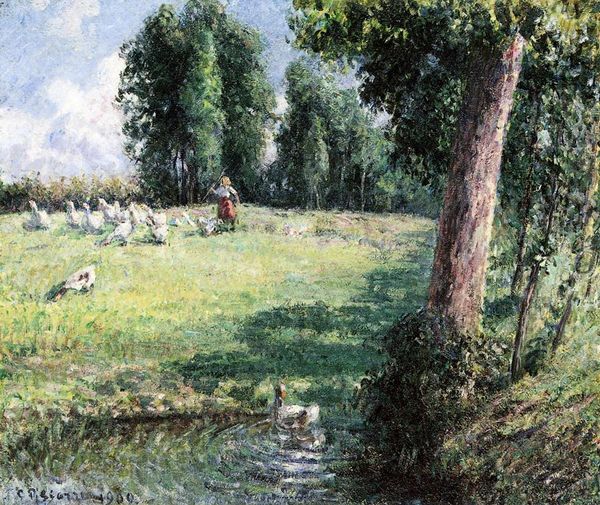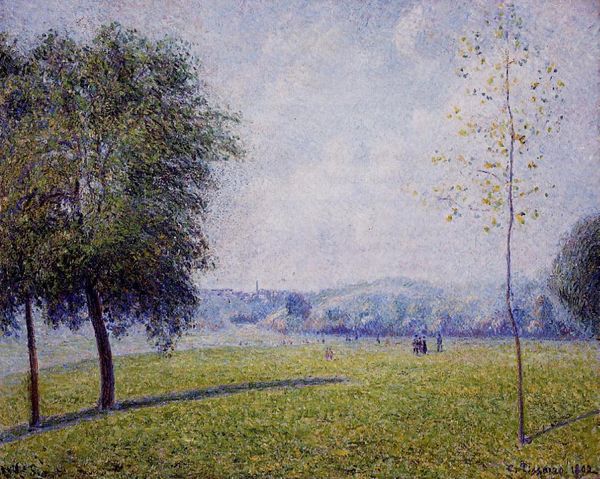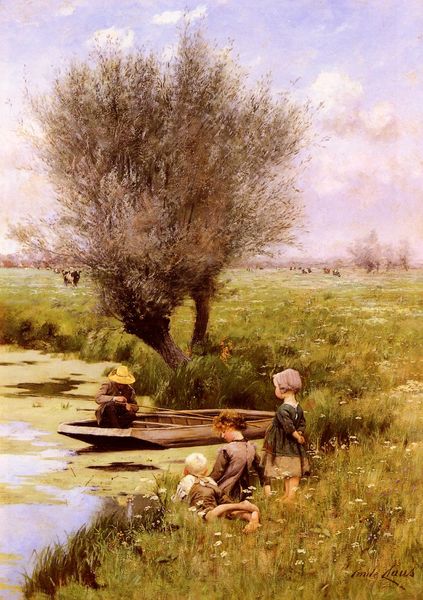
Copyright: Public domain
Here we see Emile Claus's idyllic painting, Summer. Born in Belgium in 1849, Claus emerged as a painter of the Luminist movement near the turn of the century, a style known for its embrace of light and its atmospheric effects. In Summer, we witness a scene of rural labor: a woman stands beside a cow in a golden field. Claus’s work captures a time when life was closely tied to the land. Yet, it also subtly speaks to the gendered division of labor of the period. While the woman is present in the field, her role seems supportive rather than active. The cow, too, plays a role, symbolizing sustenance and the quiet toil that defined agricultural life. The way the sunlight dapples the field and the figures gives it an emotional intensity, a sense of warmth, but also hints at the long hours and the constant work demanded by rural existence. Claus invites us to consider the lives of ordinary people, the rhythms of nature, and the intersection of gender and labor in shaping rural society.
Comments
No comments
Be the first to comment and join the conversation on the ultimate creative platform.
